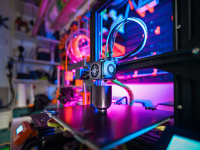
March 27, 2023
Industrial Internet of Things
Data is ubiquitous. Continuous improvements in sensors, microprocessors and other technologies have accelerated the Industrial Internet of Things (IIoT), with more instrumentation, automation, and mobile devices generating ever-increasing volumes of data within industrial environments.
Making smarter and faster decisions to improve the design, execution, and operation of an industrial facility can only go so far, however, without vastly improving how data is managed across the entire industrial project and asset lifecycle.
In most facilities today, each system generates a wealth of data that is often presented to a limited audience for a specific purpose within a particular process in the lifecycle. But that data is often disconnected from other systems and processes, so it lacks the necessary context to be useful in driving smarter and faster decisions.
Data is siloed within software systems, organizational groups, or bound to stacks of paper, creating a nightmare for engineers and other industrial workers who are estimated to spend 30% of their time searching for data they need to perform their jobs.
Industrial Asset Lifecycle
That’s a significant amount of time spent on low-value work. What is needed is a better way to manage data as vital, real-time information that delivers tangible benefits across the industrial asset lifecycle — including improved collaboration and smarter decision-making that increases the productivity, operational integrity, and sustainability of industrial facilities.
Latest News








